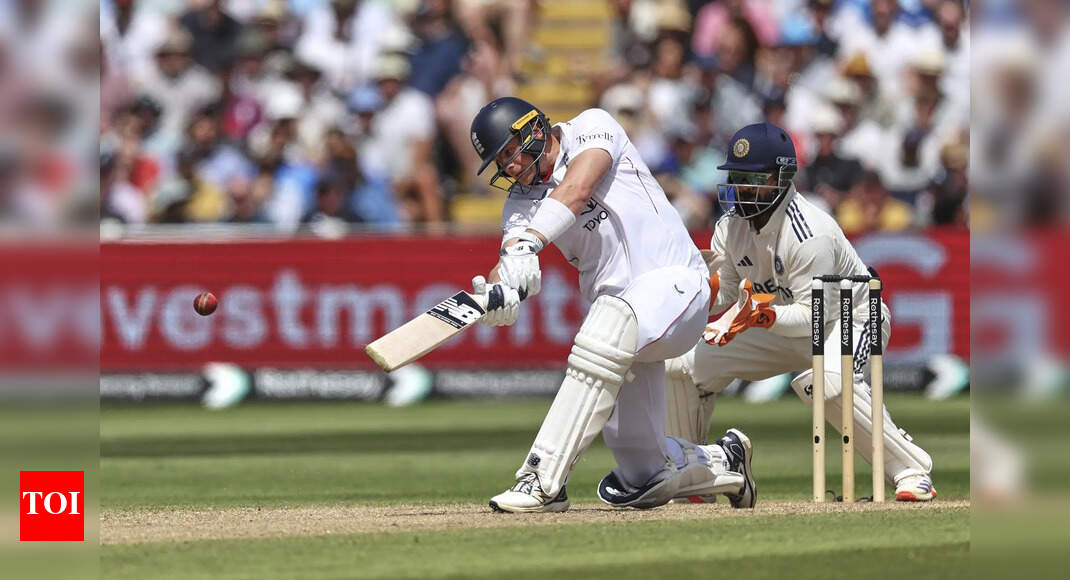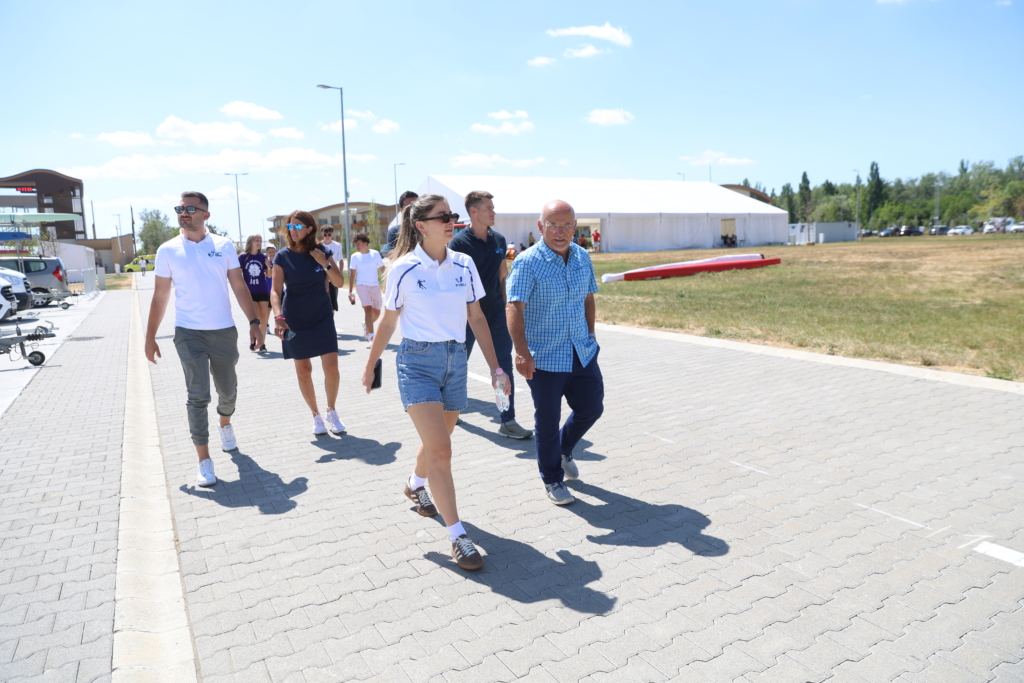Traumatic brain injury (TBI) is a common yet serious trauma, which can have a significant impact on the physiological and psychological health of patients.1 Following TBI, some patients may require tracheostomy to ensure airway patency and facilitate adequate gas exchange.2 Tracheostomy is not a cure for TBI but rather a means to address the severe impact of brain injury on respiratory system function.3 However, studies4 have indicated that patients undergoing tracheostomy after TBI are at risk of various serious complications, including respiratory system infections, pulmonary inflammation, and neurological dysfunction. These complications may exacerbate the patient’s condition, prolong hospitalization, and increase the risk of mortality. Therefore, effective nursing care and management for such patients are crucial. Given the complexity of care required for TBI patients undergoing tracheostomy, interdisciplinary collaboration among physicians, nurses, respiratory therapists, and rehabilitation specialists is essential to ensure comprehensive and continuous care. Integrating diverse professional perspectives and skill sets can enhance patient monitoring, optimize airway management, and improve rehabilitation outcomes.
Comprehensive nursing has shown significant advantages across various diseases and medical conditions.5,6 However, its application in patients with tracheostomy following TBI remains insufficiently studied. Thus, this study aims to investigate the effects of comprehensive nursing on the respiratory system and lungs of patients undergoing tracheostomy after TBI, with the aim of providing more effective nursing strategies and guidance for clinical practice.
Data and Methods
Basic Information
A retrospective analysis of clinical data was conducted on 87 patients who underwent tracheostomy after TBI in our hospital from January 2022 to January 2024. Inclusion criteria: ① Confirmed history of TBI and imaging examination; ② Age ≥ 18 years, gender unspecified; ③ Time from injury to admission < 24 h; ④ Glasgow Coma Scale (GCS)7 score ≤ 5–12 points; ⑤ Meeting the surgical indications for tracheostomy (presence of aspiration or positive sputum culture within 24 h of admission) and successful completion of tracheostomy; ⑥ Postoperative requirement for mechanical ventilation; ⑦ Relative stability of the patient’s condition; ⑧ Complete clinical data available for analysis. Exclusion criteria: ① Death upon arrival or death within 24 h due to severe hemorrhagic shock or severe trauma; ② Severe organ dysfunction; ③ Severe cardiovascular or cerebrovascular diseases; ④ Severe infections, endocrine disorders, or malignant tumors; ⑤ Immunodeficiency, coagulation, or hematopoietic abnormalities; ⑥Severe malnutrition; ⑦ Prolonged deep coma; ⑧ Lung dynamic compliance affected by trauma-induced conditions such as pneumothorax, sternum, or rib fractures; ⑨ Allergic reactions or relevant contraindications to the treatment and intervention methods adopted in this study. Patients were divided into a control group (n = 43), which received routine nursing care, and an intervention group (n = 44), which received comprehensive nursing care, based on the nursing interventions received. The comparability of baseline data between the two groups (P>0.05) is shown in Table 1. This study was approved by the Medical Ethics Committee of The First Affiliated Hospital, Jiangxi Medical College. Informed consent was obtained from all study participants. All the methods were carried out in accordance with the Declaration of Helsinki.
|
Table 1 Comparison of Basic Information
|
To minimize the impact of potential confounding variables, efforts were made to ensure consistency in medical support across both groups. All patients were managed within the same neurosurgical intensive care unit during the study period, with standardized physician involvement and respiratory therapist coverage. Staffing levels, including nurse-to-patient ratios, were maintained according to institutional ICU protocols and did not differ between groups. However, detailed quantitative data on staffing ratios, physician contact hours, and respiratory therapist involvement were not separately recorded for each patient. To minimize variability in interdisciplinary care, all patients were treated in the same neurosurgical intensive care unit under uniform institutional protocols. Standardized access to respiratory therapists and attending physicians was maintained across both groups throughout the study period. However, quantitative metrics such as individual contact hours or staffing ratios were not separately recorded. Involvement of speech-language pathologists was limited, given that the majority of patients had moderate to severe impairment of consciousness (GCS ≤ 12), and thus were not appropriate candidates for routine speech or swallowing interventions during the early postoperative phase.
Methods
All surgeries were performed by the same team of doctors and nursing staff, and preoperative nursing methods were consistent. Although no formal checklist was used, all comprehensive nursing interventions were implemented according to predefined procedures outlined in departmental nursing guidelines to ensure consistency across cases. Postoperatively, the control group received routine nursing interventions, including intervention of the patient’s condition, monitoring of vital signs, nasal feeding care, skin care, manual percussion, and suctioning as needed. The intervention group received comprehensive nursing interventions, including the following components: (1) Ward Placement: Where conditions permitted, patients were preferably placed in single rooms to minimize the risk of cross-infection. The period from 3 to 7 days postoperatively is the peak period for complications. During this time, special attention was paid to the cleanliness of the ward environment and the patient’s bedridden position. Semi-recumbent positioning was recommended to maintain airway patency, reduce the risk of respiratory and pulmonary complications, and improve patient oxygen saturation. Ultraviolet disinfection was performed at least twice daily for approximately 30 minutes each time. Meanwhile, nursing staff ensured appropriate room temperature and humidity and regularly opened windows for ventilation to maintain fresh indoor air. Additionally, strict control of the number of visitors was enforced, and all visitors were required to wear isolation gowns to reduce the potential harm of external viruses to the patients. (2) Strict Aseptic Operation: Nursing staff must disinfect themselves and wear isolation gowns when performing tracheostomy tube changes and other routine care for patients. All tools and equipment used must be disinfected, and disposable items must be replaced immediately to prevent reuse. After completing the nursing procedure, nursing staff needed to disinfect again to prevent cross-infection. (3) Airway Humidification: Airway humidification plays an indispensable role in reducing the risk of patient-related complications. Physiological saline was used for airway humidification and changed regularly every day. Patients underwent airway humidification four times daily, with professional nursing staff monitoring each session to assess respiratory conditions based on the patient’s symptoms during humidification. If the patient experienced increased respiratory rate, increased respiratory resistance, and wheezing, suctioning was performed immediately. (4) Enhanced Positioning and Percussion: To improve patient recovery, nursing staff repositioned patients every 2 hours and performed percussion before suctioning. During percussion, nursing staff used the back of their hand to form a semicircle with four fingers together, percussing from top to bottom and around the lungs to enhance the repositioning effect. Suctioning was performed from inner to outer, with gentle and swift movements during each suctioning to reduce or avoid discomfort to the patient. (5) Observation of Vital Signs: Postoperatively, nursing staff regularly observed patients’ vital signs, including pupil size and light reaction. During suctioning, nursing staff also observed other vital signs such as changes in facial color, pupil constriction, and heart rate. If the patient showed any abnormal signs, suctioning was immediately stopped, and the doctor was contacted promptly for further management. (6) Pain Management: Nursing staff must be proficient in postoperative pain management methods, clarify the use and dosage of analgesic drugs, and take necessary preventive measures for pain management. Patients and their families should be informed about the impact of emotions on postoperative pain and helped to alleviate negative emotions through psychological intervention. (7) Health Education and Daily Care: Nursing staff regularly conducted health education sessions to educate patients and their families about disease-related treatment knowledge and precautions. In terms of daily care, nursing staff regularly assessed patients’ health and recovery status, developed nutrition diet plans and daily rehabilitation training programs, and provided personalized services such as dietary care and rehabilitation training based on the patient’s specific condition. For comatose patients, nursing staff and family members called the patient’s name every 2 hours to promote awakening. For conscious patients, comfort and encouragement were provided, and detailed explanations of postoperative rehabilitation were given to patients’ families. Health education was conducted through various means such as language, text, audio, and visual aids to answer patients’ and families’ questions and provide positive feedback to enhance treatment confidence. Massage and acupressure were used to relieve pressure on patients’ pressure points, and air mattresses were used to alleviate compression. Additionally, protective rails were added bedside to prevent accidents such as falling out of bed. Supplementary Table 1 summarizes the comprehensive nursing protocol.
The selection and prioritization of comprehensive nursing interventions were based on a review of departmental nursing guidelines, clinical consensus among senior ICU nursing staff, and evidence from prior studies on postoperative care in tracheostomized patients. Interventions were prioritized according to their relevance to common complications observed in the early postoperative period, such as pulmonary infection, airway obstruction, and impaired consciousness. Specific measures (eg, aseptic procedures, airway humidification, and frequent repositioning) were implemented early and intensively during the critical window of 3–7 days post-tracheostomy, identified as the peak risk period for complications. Psychological support and education were emphasized throughout hospitalization to promote patient engagement and recovery.
Observational Indicators
Perioperative Indicators
Including postoperative monitoring time, duration of mechanical ventilation, duration of tube placement, length of ICU stay, and total length of hospital stay were compared between the control and intervention groups.
Hemodynamic Indicators
Preoperatively and at 2 weeks postoperatively, using non-invasive hemodynamic monitoring equipment to measure patients’ systolic blood pressure (SBP), diastolic blood pressure (DBP), heart rate (HR), and oxygen saturation (SpO2) levels.
Sputum Clearance and Suctioning
Including: daily sputum volume, frequency of suctioning, duration of suctioning.
Neurological Function
Pre-intervention and post-intervention, assessing patients’ neurological function using the Clinical Neurological Deficit Scale (CSS),8 which includes eight dimensions: consciousness, language, facial muscles, upper limb muscle strength, lower limb muscle strength, hand muscle strength, gaze function, and walking ability. The scale consists of 10 items with scores ranging from 0 to 45 points, with higher scores indicating worse neurological deficits.
Prognosis
Pre-intervention and post-intervention, evaluating patients’ prognosis using the Glasgow Outcome Scale (GOS)9 and the Acute Physiology and Chronic Health Evaluation II (APACHE II).10 GOS scores range from 1 to 5, with higher scores indicating better prognosis; the APACHE II scale includes 12 items scored from 0 to 4 points in a negative direction, with a total score of 71 points, and higher scores indicating poorer prognosis.
Pain Assessment
Pre-intervention and post-intervention, assessing patients’ pain using the Visual Analog Scale (VAS),11 where 0 indicates no pain and 10 indicates unbearable severe pain, with scores positively correlated with pain intensity.
Complications
Including: pulmonary infection, cerebral edema, airway injury, sputum blockage, bleeding.
Statistical Analysis
GraphPad Prism 8.0 software (GraphPad Software Inc., San Diego, CA, USA) was used for graphing, and SPSS 20.0 was used for data analysis. Descriptive statistics for continuous data were presented as mean ± standard deviation ( ), and normality was assessed using the Shapiro–Wilk test. For variables meeting the normality assumption (P > 0.05), group comparisons were performed using the independent samples t-test; categorical data were presented as n (%), and analyzed using the chi-square test. P-value < 0.05 indicated statistical significance. Given the number of outcome measures assessed, no formal correction for multiple comparisons (eg, Bonferroni correction) was applied. The primary aim of the analysis was exploratory and hypothesis-generating rather than confirmatory. Therefore, findings should be interpreted with caution, particularly for secondary outcomes, as the risk of type I error may be increased due to multiple statistical tests.
), and normality was assessed using the Shapiro–Wilk test. For variables meeting the normality assumption (P > 0.05), group comparisons were performed using the independent samples t-test; categorical data were presented as n (%), and analyzed using the chi-square test. P-value < 0.05 indicated statistical significance. Given the number of outcome measures assessed, no formal correction for multiple comparisons (eg, Bonferroni correction) was applied. The primary aim of the analysis was exploratory and hypothesis-generating rather than confirmatory. Therefore, findings should be interpreted with caution, particularly for secondary outcomes, as the risk of type I error may be increased due to multiple statistical tests.
Results
Comparison of Perioperative Indicators
The intervention group showed significantly shorter postoperative monitoring time, duration of mechanical ventilation, tube placement, ICU stay, and total hospital stay compared to the control group (P < 0.05), as shown in Table 2. In addition, no significant differences were found between the two groups in the prevalence of common comorbidities, including chronic obstructive pulmonary disease, diabetes mellitus, uremia, liver cirrhosis, coronary artery disease, and stroke (P > 0.05), indicating comparability in baseline health status.
 |
Table 2 Comparison of Perioperative Indicators
|
Comparison of Hemodynamic Indicators
As shown in Figure 1, in the intervention group, SBP and DBP levels decreased after two weeks, while SpO2 levels increased more significantly than that in the control group (P < 0.05).
 |
Figure 1 Comparison of Hemodynamic Indicator ( ). ).
Notes: Comparison with preoperative levels, *P < 0.05;  denotes mean ± standard deviation. denotes mean ± standard deviation.
|
Comparison of Sputum and Suctioning Conditions
The intervention group had a higher daily sputum volume compared to the control group, with lower suctioning frequency and duration (P < 0.05), as shown in Table 3.
 |
Table 3 Comparison of Sputum and Suctioning Conditions
|
Comparison of Neurological, Prognostic, and Pain Conditions
As illustrated in Figure 2, post-intervention GOS scores significantly increased in both groups compared to baseline, whereas CSS, APACHE II, and VAS scores significantly decreased. The intervention group exhibited a greater magnitude of improvement across all indices (P < 0.05).
 |
Figure 2 Comparison of Neurological, Prognostic, and Pain Conditions ( , score). , score).
Notes: Compared to before intervention, *P < 0.05; between groups, #P < 0.05.  denotes mean ± standard deviation. denotes mean ± standard deviation.
|
Comparison of Complications
The incidence of complications in the intervention group (9.09%) was lower than that in the control group (27.91%) (P < 0.05), as shown in Table 4. To ensure that the observed differences in complication rates were not confounded by pre-existing differences in patient condition, baseline severity was assessed by comparing the prevalence of common comorbidities between groups. No significant differences were found in the rates of chronic obstructive pulmonary disease, diabetes mellitus, uremia, liver cirrhosis, coronary artery disease, and stroke (P > 0.05), as reported in Section 2.1. This suggests that the two groups were comparable in terms of baseline health status, thereby strengthening the validity of the association between the comprehensive nursing intervention and the lower incidence of complications.
 |
Table 4 Comparison of Complications [n (%)]
|
Discussion
Patients with TBI are characterized by rapid onset, severe condition, rapid changes, and a high incidence of postoperative complications.12,13 The nursing care for these patients has certain specificity, and any problem in any link may lead to unnecessary losses for patients, even resulting in a vegetative state or death. Despite continuous improvements in modern medical equipment and treatment methods, patients with TBI still face potential life-threatening risks postoperatively. Tracheostomy, as an indispensable basic technique in emergency medicine for TBI, effectively saves patients’ lives. However, its application can also affect the normal physiological functions of some respiratory tract components, such as humidification, heating, and partial defense functions, thereby affecting the patient’s coughing and sputum ability, increasing the accumulation of respiratory secretions, and easily leading to complications such as pulmonary infections, which are one of the main reasons for the death of patients with TBI.14,15 Therefore, it is crucial to prevent complications in tracheostomized patients. Regarding the changes in hemodynamic parameters, the observed reductions in SBP and DBP in the intervention group may reflect improved cardiovascular stability and a reduction in sympathetic nervous system activity, which is crucial in critically ill patients. These changes are particularly important in the context of TBI, where managing blood pressure and preventing further cardiovascular stress are essential to improving patient outcomes. Additionally, the increase in SpO2 level observed in the intervention group suggests better pulmonary function and oxygenation, likely due to improved airway management and respiratory care provided as part of the comprehensive nursing intervention. Improved SpO2 level is clinically significant as it reduces the risk of hypoxia-related complications, such as organ dysfunction or secondary brain injury, and may contribute to faster recovery and shorter duration of mechanical ventilation. Finding targeted nursing interventions that match the specific characteristics of patients’ diseases is of great significance and clinical value. Comprehensive nursing, as an important part of comprehensive treatment measures, focuses on patients as the core, comprehensively improves patients’ physiological, psychological, and social functions through multidisciplinary cooperation and multilevel interventions.16 In patients with TBI who undergo tracheostomy, comprehensive nursing not only includes direct care for the respiratory system, such as proper airway management and assisted ventilation with a respirator, but also involves comprehensive assessment and intervention of the patient’s overall condition, such as pain management, nutritional support, and bed turning. Through this comprehensive nursing approach, the occurrence of complications can be minimized, and the quality of life and recovery rate of patients can be improved to the greatest extent.
In the present study, although SpO2 levels in the control group increased two weeks after surgery, this should not be interpreted as a better outcome compared to the intervention group. The increase observed in the control group was relatively modest and may have reflected the natural recovery process or the effects of standard respiratory support. In contrast, the intervention group exhibited a more significant improvement in SpO2 level, which was consistent with better airway management, more efficient sputum clearance, and reduced suctioning frequency and duration under the comprehensive nursing model. These factors likely contributed to enhanced oxygenation efficiency and respiratory stability, thereby reflecting the superiority of the intervention over routine care. It is important to recognize that the observed improvements in clinical outcomes are not solely attributable to nursing care in isolation. Rather, comprehensive nursing interventions function synergistically in a broader interprofessional framework. In the context of tracheostomy management, respiratory therapists play a critical role in optimizing ventilatory support, maintaining airway patency, and facilitating sputum clearance through advanced techniques and equipment management. Moreover, speech-language pathologists are essential for assessing swallowing function and initiating communication strategies, particularly in patients recovering from neurological injury. Physicians and other allied health professionals also contribute significantly through diagnostic oversight and therapeutic decision-making. The effectiveness of the comprehensive nursing model, therefore, should be understood as integrated within this multidisciplinary ecosystem, thereby enhancing patient safety, recovery, and quality of care.
Importantly, the improved outcomes observed in this study should be interpreted in the context of interprofessional collaboration, which has emerged as a cornerstone of modern tracheostomy care. The intervention implemented here reflects principles advocated by the Global Tracheostomy Collaborative (GTC), which emphasize multidisciplinary teamwork, standardized protocols, and patient-centered care as key drivers for improving safety and outcomes in tracheostomized patients.17,18 Notably, the comprehensive nursing model employed was not limited to nursing actions in isolation but was embedded within a collaborative care structure involving respiratory therapists, speech-language pathologists, physicians, and other allied health professionals. This team-based approach is supported by clinical practice guidelines and systematic reviews that highlight the effectiveness of interprofessional tracheostomy teams in reducing complications, improving communication, and facilitating earlier decannulation.19,20 Therefore, the success of the intervention group in terms of shorter hospital stays, improved hemodynamic stability, and reduced complication rates likely stems not only from high-quality nursing care, but also from the synergistic contributions of an interdisciplinary care model aligned with evidence-based global standards. A study21 found that factors such as postoperative tracheostomy decannulation and pain in patients with TBI can increase stress responses, causing abnormal fluctuations in hemodynamics, thereby prolonging maintenance and treatment time. In this study, a comprehensive nursing model was applied for intervention in the postoperative care of patients with craniocerebral trauma undergoing tracheostomy. The results showed that compared to routine care, the comprehensive nursing model significantly shortened the postoperative monitoring time, mechanical ventilation time, tracheostomy duration, ICU stay, and total hospital stay for patients. This is conducive to maintaining postoperative hemodynamic stability in the body. These results share commonalities with previous related studies.22,23 The reason for this may lie in the fact that comprehensive nursing promotes patient recovery from multiple aspects, such as timely encouragement and comfort for awakening patients, and softly waking up comatose patients; strengthening postoperative patient health education, providing suctioning, pain management, and other care to ensure patient airway patency, and accelerate postoperative recovery. Regarding prognosis, the results of this study showed that the CSS scores, APACHE II scores, and VAS scores in the intervention group were lower than those in the control group, while the GOS score was higher than that in the control group, indicating that comprehensive nursing intervention can effectively improve the quality of patient prognosis and alleviate patient suffering. The reason for this lies in the fact that the comprehensive nursing model formulates nursing measures from multiple aspects such as postoperative pain management, early rehabilitation training, psychological counseling, etc., to keep patients in a more comfortable physical and mental state after surgery.24 Nurses will guide family members to accompany patients, urge patients to undergo early rehabilitation training, maintain a comfortable environment in the ward, enhance cognition through health education, cooperate with treatment, and improve prognosis quality. In addition, patients after tracheostomy often suffer from significant pain. Comprehensive nursing will provide corresponding analgesic treatment based on the patient’s pain situation, while counseling patients on negative emotions, formulating pain management content, observing tracheal intubation conditions, etc., thereby ensuring that the patient’s vital signs remain stable, which is beneficial to the recovery of bodily functions. Regarding complications, the results of this study showed that the incidence of complications in the intervention group was lower than that in the control group. This result suggests that comprehensive nursing can reduce the risk of patient-related complications to a certain extent. Patients in a coma after surgery have no autonomous consciousness, and neurological and brain tissue damage. Tracheostomy can easily lead to infections in the respiratory tract and lungs.25 In comprehensive nursing, nurses will closely monitor the intubation situation and provide corresponding interventions throughout the process, thereby reducing the risk of complications such as sputum plug blockage, airway damage, and lung infection. In addition, comprehensive nursing interventions will also alleviate pressure on patient pressure points through massage, gentle pressing, etc., help patients avoid pressure injuries, and assist patients in recovering as quickly as possible through diet, rehabilitation exercises, etc., thereby further reducing the risk of complications.
However, this study has several limitations that should be acknowledged. Firstly, the relatively small sample size might limit the statistical power and generalizability of the findings. Secondly, the retrospective study design might increase the risk of information bias and treatment selection bias. Specifically, the absence of randomization and prospective data collection might introduce selection bias, thereby compromising the internal validity and making it more difficult to draw definitive causal inferences. Thirdly, as a single-center study, the findings may not be widely generalizable to other healthcare settings with different patient populations or clinical practices. Finally, individual differences, such as baseline health status, lifestyle factors, and adherence to treatment were not fully considered, which might influence the observed outcomes. Future studies should aim to overcome these limitations by employing prospective, multicenter designs with larger and more diverse samples, while also accounting for patient-level variability to enhance the credibility and applicability of the results.
Conclusion
The findings of this retrospective study suggested that comprehensive nursing care could be associated with improved outcomes in patients undergoing tracheostomy after TBI. Patients in the intervention group demonstrated better recovery trajectories, including more stable hemodynamic parameters, reduced pain levels, fewer complications, and enhanced neurological and prognostic indicators. While these results are encouraging, it is important to recognize that, due to the non-randomized and retrospective nature of the study design, definitive conclusions about causality cannot be drawn. Nevertheless, the observed associations indicate that comprehensive nursing, implemented in a multidisciplinary framework, may contribute to more favorable perioperative and recovery outcomes. Future prospective and controlled studies are warranted to validate these findings and further explore the causal mechanisms underlying the observed improvements.
Disclosure
The authors report no conflicts of interest in this work.
References
1. Conde V, Siebner HR. Brain damage by trauma. Handb Clin Neurol. 2020;168:39–49.
2. McShane EK, Sun BJ, Maggio PM, et al. Improving tracheostomy delivery for trauma and surgical critical care patients: timely trach initiative. BMJ Open Qual. 2022;11(2):e001589. doi:10.1136/bmjoq-2021-001589
3. Bertini P, Marabotti A, Paternoster G, et al. Early versus late tracheostomy for traumatic brain injury: a systematic review and meta-analysis. Minerva Anestesiol. 2023;89(5):455–467. doi:10.23736/S0375-9393.23.17176-8
4. Rabinstein AA, Cinotti R, Bösel J. Liberation from mechanical ventilation and tracheostomy practice in traumatic brain injury. Neurocrit Care. 2023;38(2):439–446. doi:10.1007/s12028-023-01693-6
5. Yang D, Feng R, Liu L. Effect of comprehensive nursing based on evidence-based nursing on reducing the incidence of pressure ulcers in patients undergoing posterior orthopedic surgery. Medicine. 2023;102(38):e35100. doi:10.1097/MD.0000000000035100
6. Liu J, Xun Z. Evaluation of the effect of comprehensive nursing in psychotherapy of patients with depression. Comput Math Methods Med. 2021;2021:2112523. doi:10.1155/2021/2112523
7. Ghneim M, Albrecht J, Brasel K, et al. Factors associated with receipt of intracranial pressure monitoring in older adults with traumatic brain injury. Trauma Surg Acute Care Open. 2021;6(1):e000733. doi:10.1136/tsaco-2021-000733
8. An X, Du X, Yang B, et al. Prognostic impact of serum homocysteine-lowering therapy on patients with hemorrhagic stroke and its influence on national institutes of health stroke scale and China stroke scale scores. Altern Ther Health Med. 2024;30(1):381–385.
9. Wilson L, Boase K, Nelson LD, et al. A Manual for the Glasgow Outcome Scale-Extended Interview. J Neurotrauma. 2021;38(17):2435–2446. doi:10.1089/neu.2020.7527
10. Kahraman F, Yılmaz AS, Demir M, et al. APACHE II score predicts in-hospital mortality more accurately than inflammatory indices in patients with acute coronary syndrome. Kardiologiia. 2022;62(9):54–59. doi:10.18087/cardio.2022.9.n1979
11. Shafshak TS, Elnemr R. The visual analogue scale versus numerical rating scale in measuring pain severity and predicting disability in low back pain. J Clin Rheumatol. 2021;27(7):282–285. doi:10.1097/RHU.0000000000001320
12. Scarboro M, McQuillan KA. Traumatic brain injury update. AACN Adv Crit Care. 2021;32(1):29–50. doi:10.4037/aacnacc2021331
13. Giner J, Mesa Galán L, Yus Teruel S, et al. Traumatic brain injury in the new millennium: new population and new management. Neurologia. 2022;37(5):383–389. doi:10.1016/j.nrl.2019.03.012
14. Gelormini C, Caricato A. Tracheostomy in traumatic brain injury: selection and stratification. Minerva Anestesiol. 2023;89(5):374–376. doi:10.23736/S0375-9393.23.17380-9
15. Robba C, Galimberti S, Graziano F, et al. Tracheostomy practice and timing in traumatic brain-injured patients: a CENTER-TBI study. Intensive Care Med. 2020;46(5):983–994. doi:10.1007/s00134-020-05935-5
16. Xu Y, Wang RY, Zhao YH. Effects of perioperative comprehensive nursing based on risk prevention for patients with intracranial aneurysm. Int J Clin Pract. 2021;75(4):e13761. doi:10.1111/ijcp.13761
17. Brenner MJ, Pandian V, Milliren CE, et al. Global tracheostomy collaborative: data-driven improvements in patient safety through multidisciplinary teamwork, standardisation, education, and patient partnership. Br J Anaesth. 2020;125(1):e104–e118. doi:10.1016/j.bja.2020.04.054
18. McGrath BA, Wallace S, Lynch J, et al. Improving tracheostomy care in the United Kingdom: results of a guided quality improvement programme in 20 diverse hospitals. Br J Anaesth. 2020;125(1):e119–e129. doi:10.1016/j.bja.2020.04.064
19. Mussa CC, Gomaa D, Rowley DD, Schmidt U, Ginier E, Strickland SL. AARC clinical practice guideline: management of adult patients with tracheostomy in the acute care setting. Respir Care. 2021;66(1):156–169. doi:10.4187/respcare.08206
20. Ninan A, Grubb LM, Brenner MJ, et al. Effectiveness of interprofessional tracheostomy teams: a systematic review. J Clin Nurs. 2023;32(19–20):6967–6986. doi:10.1111/jocn.16815
21. Selvakumar S, Chan K, Ngatuvai M, et al. Timing of tracheostomy in patients with severe traumatic brain injuries: the need for tailored practice management guidelines. Injury. 2022;53(8):2717–2724. doi:10.1016/j.injury.2022.06.031
22. Villemure-Poliquin N, Costerousse O, Lessard Bonaventure P, et al. Tracheostomy versus prolonged intubation in moderate to severe traumatic brain injury: a multicentre retrospective cohort study. Can J Anaesth. 2023;70(9):1516–1526. doi:10.1007/s12630-023-02539-7
23. Du K, Xu Y, Shen Y. Early or late tracheostomy in patients with traumatic brain injury. Crit Care Med. 2021;49(3):e335–e336. doi:10.1097/CCM.0000000000004729
24. Xiang X, Chen Y, Dai L. Effect of perioperative comprehensive nursing intervention on the rehabilitation effect of radiofrequency ablation for patients with hypertrophic obstructive cardiomyopathy. Contrast Media Mol Imaging. 2022;2022(1):6436073. doi:10.1155/2022/6436073
25. Tavares WM, Araujo de França S, Paiva WS, et al. Early tracheostomy versus late tracheostomy in severe traumatic brain injury or stroke: a systematic review and meta-analysis. Aust Crit Care. 2023;36(6):1110–1116. doi:10.1016/j.aucc.2022.12.012
 Reuters
Reuters Getty Images
Getty Images PA Media
PA Media
















